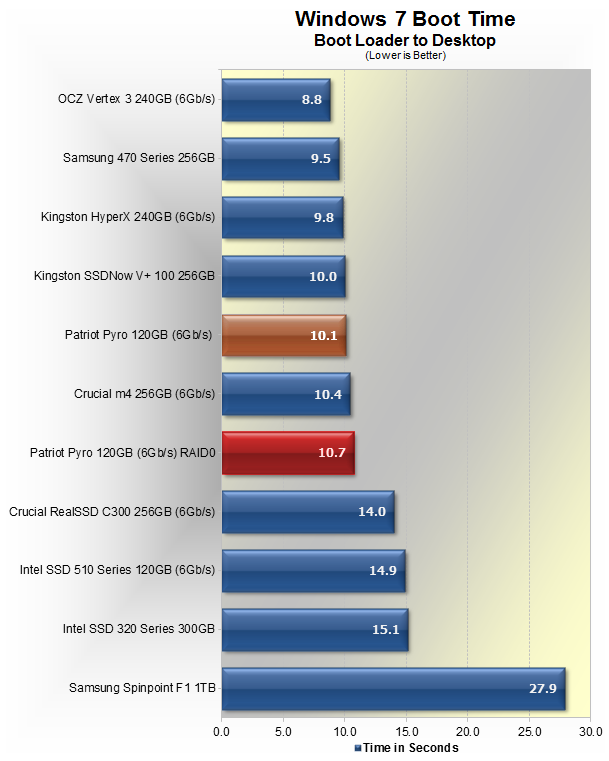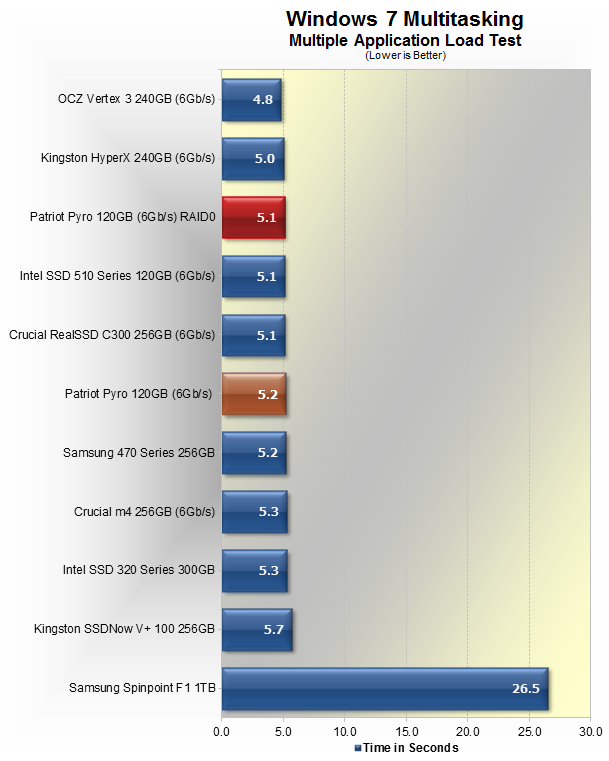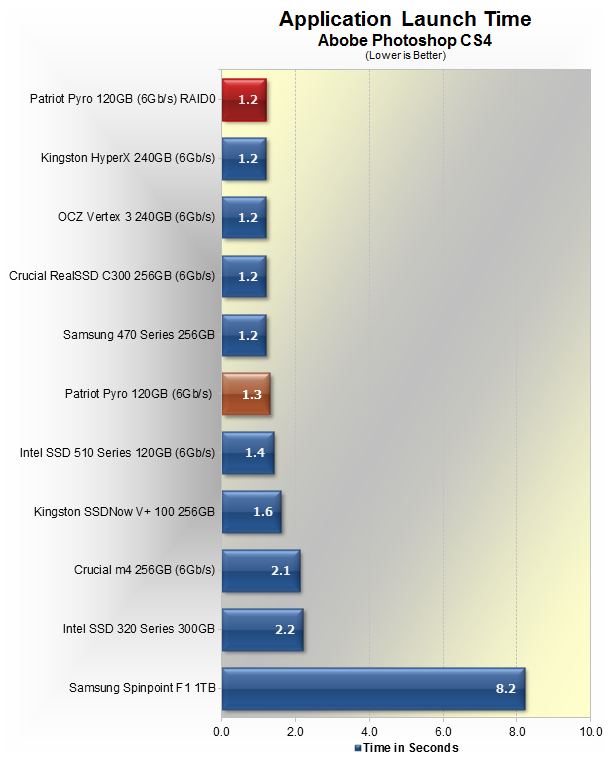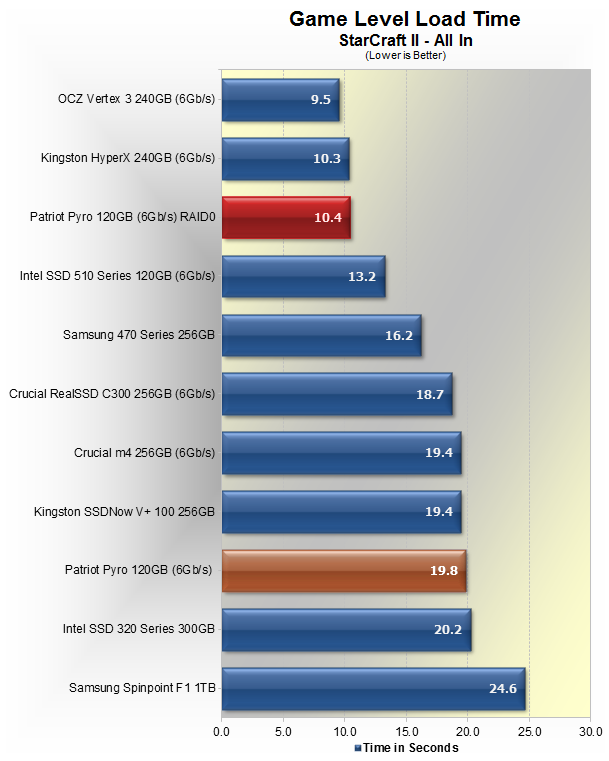Benchmarks: Real-World Applications

The Windows 7 boot time test starts when the OS loading screen appears and ends when the Windows desktop is fully loaded.
Despite being significantly slower than the Vertex 3 in our file copy tests, the Patriot Pyro 120B only took 14% longer to load Windows 7, which equates to 1.3 seconds. Adding a second Pyro drive for our RAID0 configuration did nothing to aid performance, in fact we found that the boot time was a fraction slower, going from 10.1 seconds to 10.7 seconds from an average of three tests.

For the application load test, we launch the following applications on Windows' startup: Internet Explorer, Outlook 2007, Access 2007, Excel 2007, PowerPoint 2007, Publisher 2007, Word 2007 and Photoshop CS4. The test runs from when the Windows 7 startup sound plays to the time the final application is loaded.
Despite the fact that conventional hard drives take over 20 seconds to complete this test, most SSDs manage it in around 5 seconds and this was true of the Pyro. The Patriot Pyro took roughly 5 seconds to load all these applications on startup and running two drives in RAID0 did nothing to improve performance.

The Patriot Pyro was just as fast as the OCZ Vertex 3 when it came to launching applications such as Photoshop CS4 taking a little over 1 second. Again, adding a second drive did nothing to improve performance.

The Patriot Pyro 120GB was relatively slow when testing level load times in StarCraft II as a single drive took 19.8 seconds – about the same time it took for the Intel SSD 320, SSDNow V+ 100 and Crucial m4. By comparison, the Intel SSD 510 took 13.2 seconds while the HyperX took 10.3 and the Vertex 3 finished in 9.5.
Although the single drive showed lackluster results, adding a second Pyro improved performance by a drastic 47%, putting the RAID0 configuration at 10.4 seconds – less than a second behind the venerable Vertex 3.